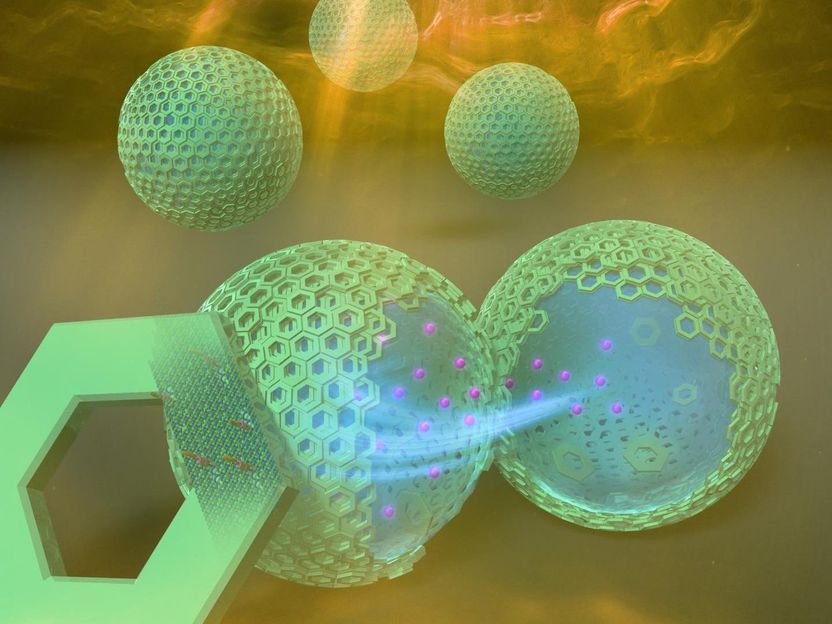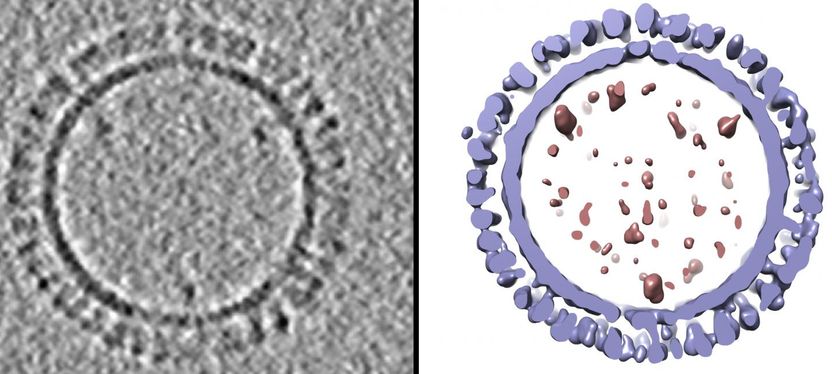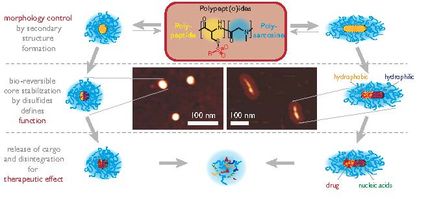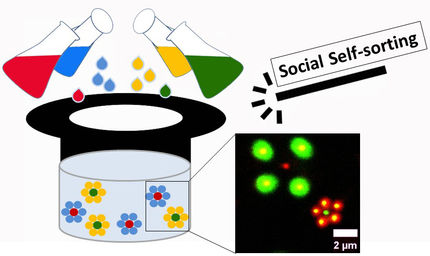Scientists develop DNA microcapsules with built-in ion channels
A Research group led by Tokyo Tech reports a way of constructing DNA-based microcapsules that hold great promise for the development of new functional materials and devices. They showed that tiny pores on the surface of these capsules can act as ion channels. Their study will accelerate advances in artificial cell engineering and molecular robotics, as well as nanotechnology itself.

This is a conceptual illustration of DNA nanoplate-based microcapsules.
Masahiro Takinoue of Tokyo Institute of Technology
DNA-based, self-assembled nanostructures are promising building blocks for new kinds of micro- and nanodevices for biomedical and environmental applications. Much research is currently focused on adding functionality to such structures in order to expand their versatility.
For example, engineered capsules called liposomes that have a lipid-bilayer membrane are already successfully being used as sensors, diagnostic tools and drug delivery systems. Another group of capsules that do not have a lipid bilayer but are instead composed of colloidal particle membrane, known as Pickering emulsion or colloidosomes, also have potential for many biotechnologically useful applications.
Now, a research group led by biophysicist Masahiro Takinoue of Tokyo Institute of Technology reports a new type of Pickering emulsion with the added functionality of ion channels -- an achievement that opens up new routes to designing artificial cells and molecular robots.
"For the first time, we have demonstrated ion channel function using pored DNA nanostructures without the presence of a lipid-bilayer membrane," says Takinoue.
The team's design exploits the self-assembling properties of DNA origami nanoplates. The resulting Pickering emulsions are stabilized by the amphiphilic nature of the nanoplates.
One of the most exciting implications of the study, Takinoue explains, is that it will be possible to develop stimuli-responsive systems -- ones that are based on the concept of open-close switching. Such systems could eventually be used to develop artificial neural networks mimicking the way the human brain works.
"In addition, a stimuli-responsive shape change of the DNA nanoplates could serve as a driving force for autonomous locomotion, which would be useful for the development of molecular robots," Takinoue says.
The present study highlights the team's strengths in combining DNA nanotechnology with a perspective grounded in biophysics and soft-matter physics.
Original publication
Other news from the department science

Get the life science industry in your inbox
By submitting this form you agree that LUMITOS AG will send you the newsletter(s) selected above by email. Your data will not be passed on to third parties. Your data will be stored and processed in accordance with our data protection regulations. LUMITOS may contact you by email for the purpose of advertising or market and opinion surveys. You can revoke your consent at any time without giving reasons to LUMITOS AG, Ernst-Augustin-Str. 2, 12489 Berlin, Germany or by e-mail at revoke@lumitos.com with effect for the future. In addition, each email contains a link to unsubscribe from the corresponding newsletter.
Most read news
More news from our other portals
Last viewed contents

A 3D structure of 1918 influenza virus-like particles
Category:Fungicides
Foods_containing_tyramine
Affectional_bond
Staph uses nitric oxide enzyme to colonize noses
California_Constitution_Article_XXXV
Richard_Herrnstein























































